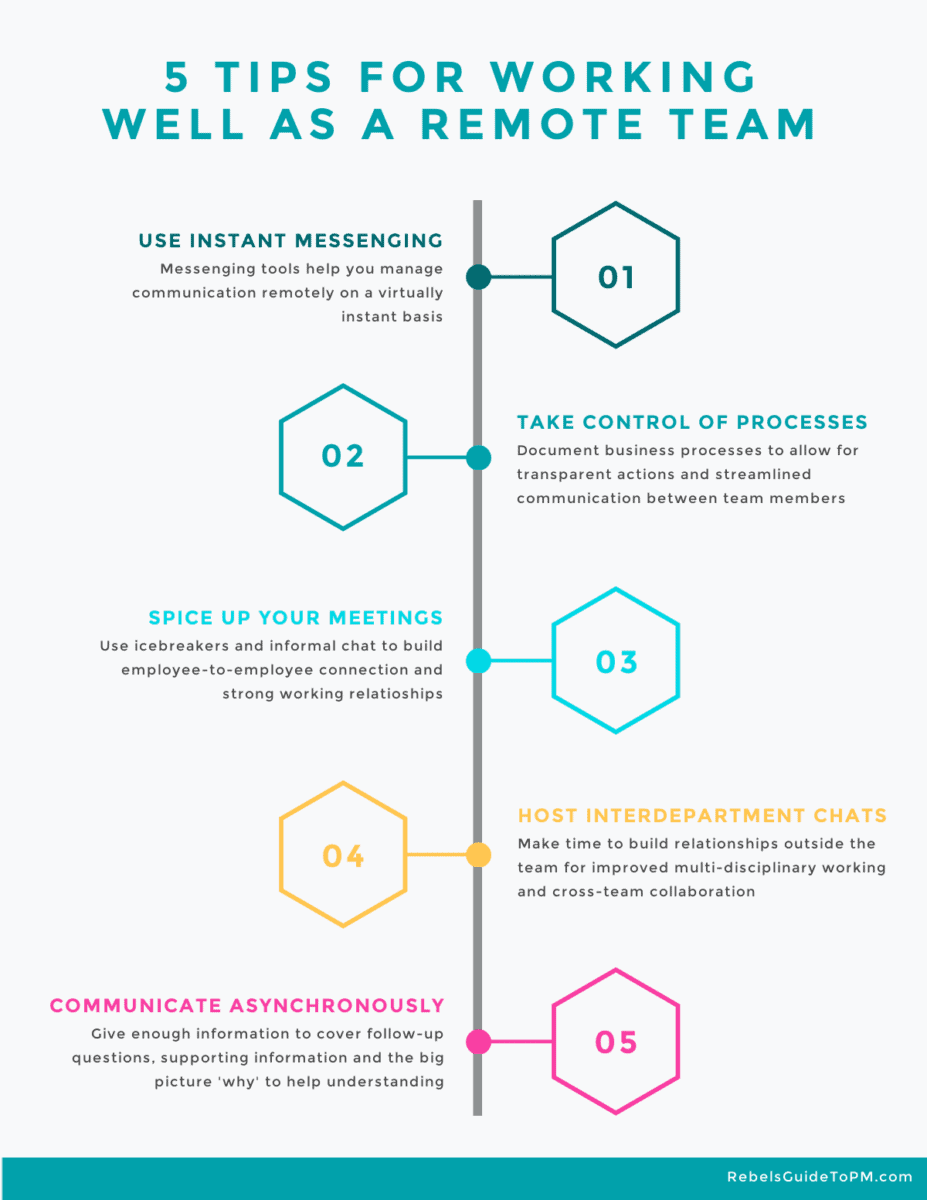Managing A Remote Team? Remember These 3 Key Tips For Success
This blog is reader-supported. When you purchase something through an affiliate link on this site, I may earn some coffee money. Thanks! Learn more.
After the worst of the impact of the pandemic, remote and hybrid work environments have become the modern standard for most office-based roles. More people than ever are working from home.
Whether your project team has adopted a remote working style, or you’re considering the possible benefits and pitfalls (perhaps of going back to office-based working), read on. Below, we’ll go over three of the most important areas to focus on when managing a remote team successfully.
1. Track your team’s progress
When you’re managing your team remotely, there’s a fine balance between being able to track their productivity and micromanaging every stage of the work.
You need to discuss your expectations with your colleagues as a whole and individually. Setting clear deadlines is a good starting point, but it’s important to have a conversation about exactly what you’re expecting them to be able to do within a given time frame. While you want your team to meet project goals and hit the milestones, you don’t want them to feel overwhelmed and stressed out because their workload seems unreasonable.
You may also have to find a way to track your team’s hours, without being overly invasive. In an office you might have a clocking-in system, or at least you’ll have a rough idea of what time people arrive and leave, and how long their breaks are. Working from home, however, it’s harder to tell exactly how much time your team spends at their desk working.

Productivity paranoia happens when managers don’t believe their team members are doing productive work, and that can undermine trust and create unproductive habits, which is counter-intuitive. Microsoft reports that less than a third of employees (31%) are given clear guidance about what are the important tasks.
In roles where time-tracking is useful, look into tools like Toggl, where your team can log how much time they spend working on each task. It can be helpful to compare estimates back to actuals to review how accurate the estimates were and inform future task planning.
Don’t expect them to log a full 8 hours per day, as this sets an unrealistic expectation — your team will feel like they can’t step away from their desk even for a minute.
Allow time in your team’s schedule for training and professional development. While you want to focus on ensuring your team is productive and getting the work done, it’s also important that their own development doesn’t fall by the wayside when you’re working remotely.
Organize regular training sessions for your team, and encourage them to spend time completing courses like PMI Kickoff that will help them to do their job better or broaden their skills.
2. Stay in touch with your team
Communication is essential to keeping your team working efficiently. Using communications technology and tactics will also help you to achieve your goals. Find a tech stack that meets the needs of your team: there are plenty of different ways to keep in touch using emails, video calls, and instant messaging but not every channel works for every project or even every team member.
Have you ever lost something in a Teams or Slack chat? Keep on top of your different channels so that things don’t get missed or forgotten about – share tips like how to flag items, color-code calendar appointments or set reminders so nothing falls through the cracks.
Record important online meetings or get someone to take notes, and choose separate channels for team announcements or company news, project work, and other tasks so they don’t get lost. Any feedback or actions to take should be added into project notes or your task management system.
Managing a global team? If so, communication is paramount. Not only will you need to consider time-zone differences, but also any potential issues surrounding payroll, too. If your international workers are operating as independent contractors, for example, things may become especially tricky, and you need to ensure you’re operating within the legal framework of their home country. Wondering how to pay an independent contractor whether at home or further afield? Remote has created a useful guide on the topic.
Schedule regular team meetings, as well as regular catch-ups with individual team members. It’s important that everyone still feels that they are working together even if they never see each other, and you give them an opportunity to catch up on progress.
Don’t forget that it is still possible to have in-person meetings. At least two thirds of communication is non-verbal, so you are missing out by having camera-off calls all the time. Many businesses do work well fully remotely, but meeting up in person allows your team to form stronger bonds, address any issues, and have more of an input into discussions.
3. Plan out the workload
Planning takes on a new level of importance when your team is working remotely. When you’re seeing them face-to-face every day it’s easy to have little conversations here and there about ongoing projects, what needs to be done, and how things are going. But when you and your team are all working from home, it’s harder to keep track of the work and things can be misunderstood or overlooked.
You need to carefully plan out the work that needs to be done — start by setting clear goals and deadlines for each project you’re working on. Each team member can take their own area of responsibility and create workstream-level project plans as well as To Do lists for non-project work (as Elizabeth teaches in her Managing Multiple Projects book).
Consolidate individual and team plans to create a portfolio of work for each person and the team overall. The aggregated plans are what you’ll go through during team meetings and 1:1 calls to make sure everything stays on track.
The planning phase of any project can take some time but the work you put in here to get to an appropriate level of detail for tracking will mean everyone knows exactly what they need to work on and when it needs to be completed.
Tools are a useful support here too — rely on your project management software to help keep people on the same page. Make sure people have access to shared document storage to allow for easy access to all the files and folders that they need to use, whether that is
It’s important to have a proper file structure in place that your team can follow, otherwise it will quickly become messy and disorganized and hard to find what you’re looking for.
Remote working offers a lot of benefits, and you’ll often find your team can be far more productive when they’re working from home. It’s always important to plan out your work carefully, let your team know what you’re expecting, communicate well, and keep an eye on their progress. But while these things are easier to achieve in an office setting, you have to put in place processes, tools, and structures to ensure it still works for your team when they’re working remotely.

